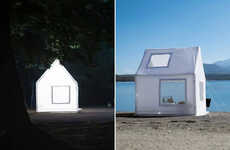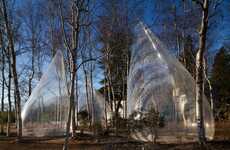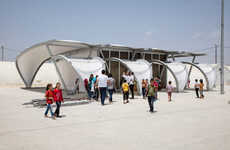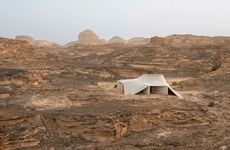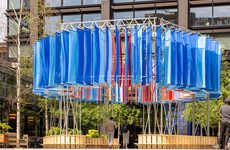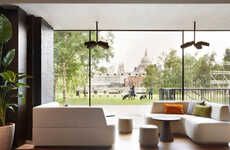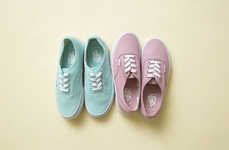
Tate Harmer's 'Big Tent' Will House London's Museum of Scouting
Joey Haar — January 6, 2017 — Art & Design
References: tateharmer & archdaily
Tate Harmer's Big Tent design is appropriately whimsical considering its purpose. The London-based architecture firm's building proposal, which won a preceding design competition put on by The Scout Association, features a giant, colorful tent that looks reminiscent of the big tops at a carnival.
The childish glee that Tate Harmer's Big Tent evokes meshes nicely for the planned museum of scouting. For nearly a century, the Scouts have been a popular organization for kids interested in learning about nature and survival. The fabric of the tent is thus planned to be made up of the Scouts' iconic neckerchiefs.
Beyond the tent itself, the building will feature plenty of open air and ecologically conscious volumes in order to remain in line with the ethos of the Scouts Association.
The childish glee that Tate Harmer's Big Tent evokes meshes nicely for the planned museum of scouting. For nearly a century, the Scouts have been a popular organization for kids interested in learning about nature and survival. The fabric of the tent is thus planned to be made up of the Scouts' iconic neckerchiefs.
Beyond the tent itself, the building will feature plenty of open air and ecologically conscious volumes in order to remain in line with the ethos of the Scouts Association.
Trend Themes
1. Whimsical Architecture - Architecture firms can explore more design approaches that are childlike and whimsical for playful environments like museums and amusement parks.
2. Eco-conscious Building - Designers can look towards incorporating green building elements, such as natural ventilation, in buildings to stay in line with environmentally conscious organizations.
3. Clothing-based Design - Fashion designers and architects can explore the use of clothing and accessories as building materials for unique and creative building designs.
Industry Implications
1. Architecture - Architecture firms can use innovative design approaches like whimsical architecture and eco-conscious building to capture unique projects, like museums and amusement parks.
2. Fashion - Fashion designers can explore new opportunities in clothing-based design, such as using textiles as building materials for unique and creative structures.
3. Education - Educational organizations like museums can seek to incorporate fun, playful, and imaginative architecture to engage and inspire young learners.
2.5
Score
Popularity
Activity
Freshness


